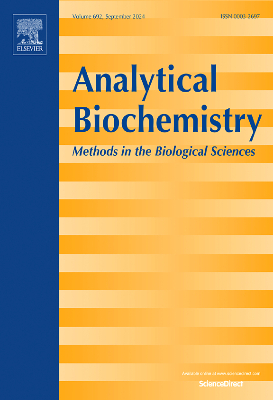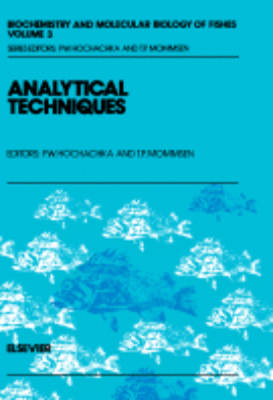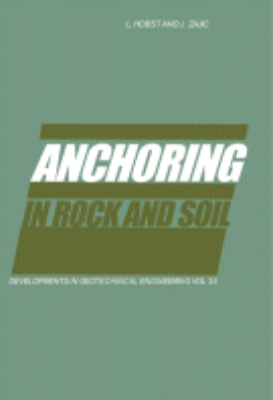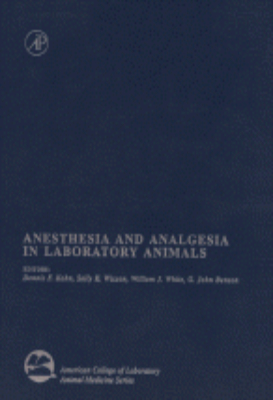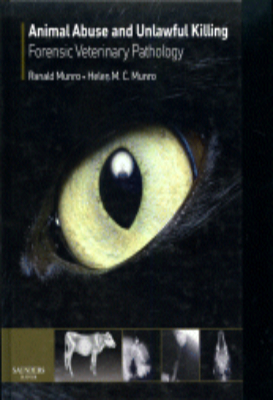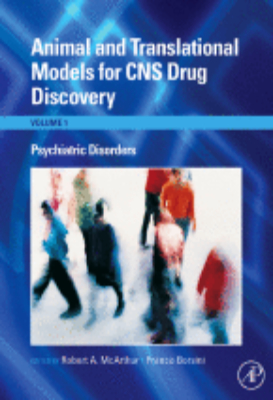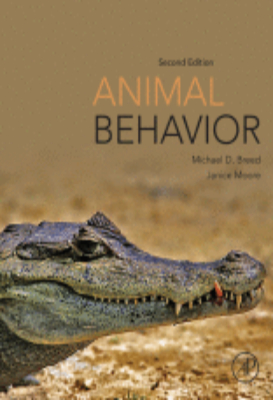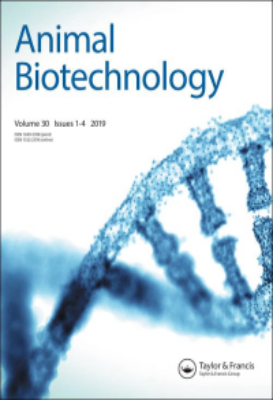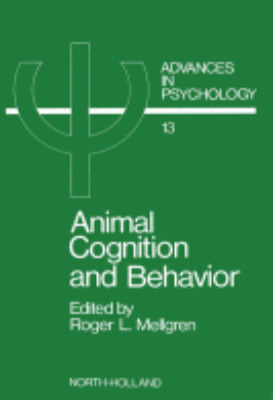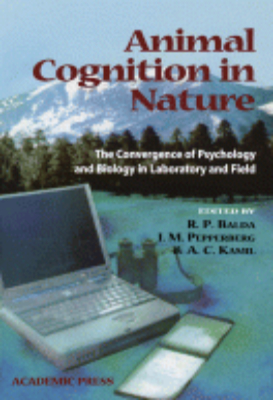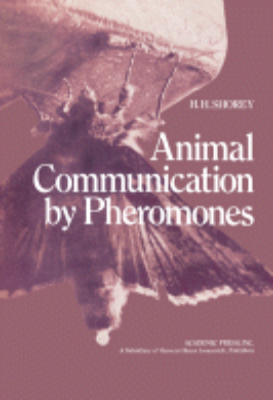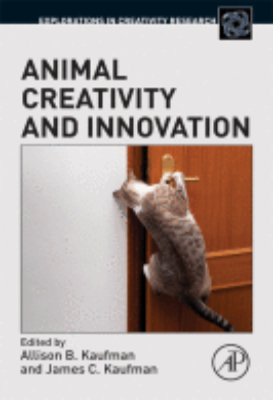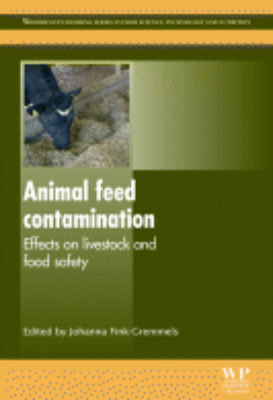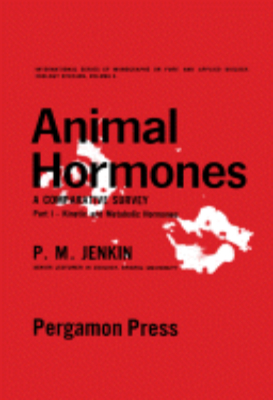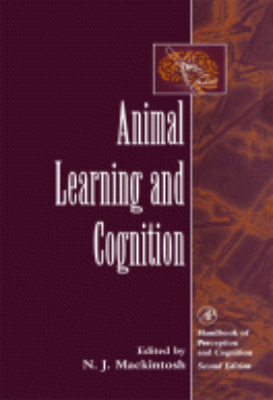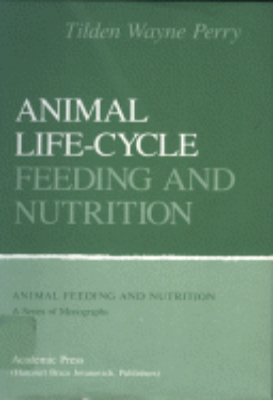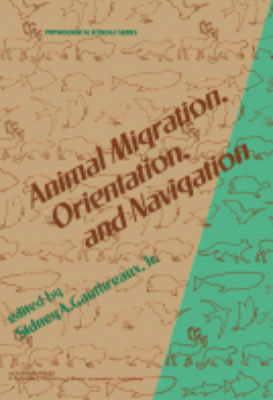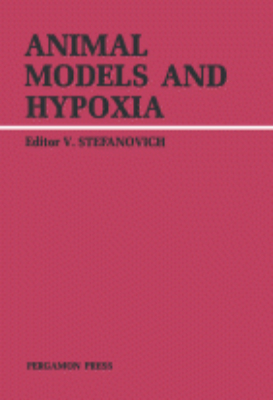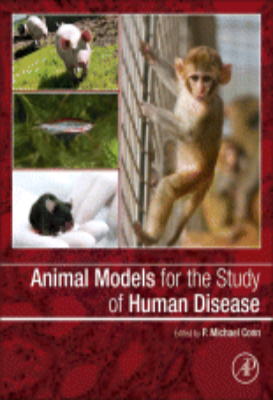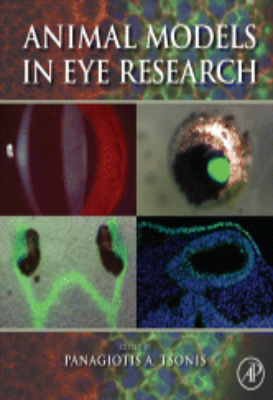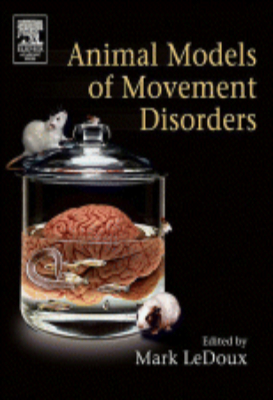Agricultural Science
Anesthesia and Analgesia in Laboratory Animals: 1997
"Anesthesia and Analgesia in Laboratory Animals focuses entirely on the special anesthetic, analgesic, and postoperative care requirements associated with experimental surgery. Sponsored by the American College of Laboratory Animal Medicine, this informative work provides the reader with agents, methods, and techniques for anesthesia and analgesia that ensure humane and successful procedural outcomes. Key Features. Focuses on a wide variety of animal species used in research. Provides a comprehensive overview of the pharmacology of anesthetics and analgesics. Includes monitoring of analgesia and anesthesia. Organizes topics by species for agents and methods of providing anesthesia, analgesia, and post-op care to animals. No other American text is devoted entirely to this topic"
Anesthesia and Analgesia in Laboratory Animals: Second Edition 2008
"Anesthesia and Analgesia in Laboratory Animals focuses on the special anesthetic, analgesic, and postoperative care requirements associated with experimental surgery. Fully revised and updated this new edition provides the reader with agents, methods, and techniques for anesthesia and analgesia that ensure humane and successful procedural outcomes. Key Features. Provides researchers with the most comprehensive and up-to-date review of the use of anesthesia and analgesia in laboratory animals. Thoroughly updated with new material on ferrets, birds, reptiles, amphibians, fish, and invertebrates. Includes hot topic areas such as pain research, ethical issues, legal issues, and imaging studies"
Animal Abuse and Unlawful Killing
This book guides veterinarians and lawyers through the diverse and complex fields of alleged cruelty to, and unlawful killing of, companion animals, farm livestock and wildlife. It draws together current knowledge on how to approach, investigate and report forensic cases. Key Features Covers all aspects of the forensic post-mortem including cause and time of death Features the fundamentals of abuse and neglect Allows rapid access to descriptions of different types of injuries and gives essential guidance on their interpretation Backed by practical standard operative procedures from world experts to ensure proper and professional case management High quality, specially selected photographs, a clear writing style and concise presentation informs and encourages the reader towards soundly-based conclusions
Animal and Translational Models for CNS Drug Discovery
Animal and Translational Models for CNS Drug Discovery combines the experience of academic, clinical and pharmaceutical neuroscientists in a unique collaborative approach to provide a greater understanding of the relevance of animal models of neuropsychiatric disorders and their role as translational tools for the discovery of CNS drugs being developed for the treatment of these disorders. The focus of this three-volume series of essays is to present a consensual picture of the translational value of animal models from leading experts actively involved in the use of animal models for understanding fundamental neurobiology of CNS disorders and the application of this knowledge to CNS drug discovery, and clinical investigators involved in clinical trials, drug development and eventual registration of novel pharmaceuticals. Each volume of the Animal and Translational Models for CNS Drug Discovery series is dedicated to the development and use of animal models in key therapeutic areas in psychiatric, neurologic and reward deficit disorders. Each volume has introductory chapters expressing the view of the role and relevance of animal models for CNS drug discovery and development from the perspective of (a) academic basic neuroscientific research, (b) applied pharmaceutical drug discovery and development, and (c) issues of clinical trial design and regulatory agencies limitations. Each volume examines the rationale, use, robustness and limitations of animal models in relevant therapeutic areas and discusses the use of animal models for target identification and validation. The clinical relevance of animal models is discussed in terms of major limitations in cross-species comparisons, clinical trial design of drug candidates, and how clinical trial endpoints could be improved. The aim of this series of volumes on Animal and Translational Models for CNS Drug Discovery is to identify and provide common endpoints between species that can serve to inform both the clinic and the bench with the information needed to accelerate clinically-effective CNS drug discovery. Key Features - Provides clinical, academic, government and industry perspectives fostering integrated communication between principle participants at all stages of the drug discovery process - Critical evaluation of animal and translational models improving transition from drug discovery and clinical development - Emphasizes what results mean to the overall drug discovery process - Explores issues in clinical trial design and conductance in each therapeutic area - Each volume is available for purchase individually.
Animal Behavior (Second Edition)
"Animal Behavior, Second Edition, covers the broad sweep of animal behavior from its neurological underpinnings to the importance of behavior in conservation. The authors, Michael Breed and Janice Moore, bring almost 60 years of combined experience as university professors to this textbook, much of that teaching animal behavior. An entire chapter is devoted to the vibrant new field of behavior and conservation, including topics such as social behavior and the relationship between parasites, pathogens, and behavior. Thoughtful coverage has also been given to foraging behavior, mating and parenting behavior, anti-predator behavior, and learning. This text addresses the physiological foundations of behavior in a way that is both accessible and inviting, with each chapter beginning with learning objectives and ending with thought-provoking questions. Additionally, special terms and definitions are highlighted throughout. Animal Behavior provides a rich resource for students (and professors) from a wide range of life science disciplines. Key Features. Provides a rich resource for students and professors from a wide range of life science disciplines. Updated and revised chapters, with at least 50% new case studies and the addition of contemporary in-text examples. Expanded and updated coverage of animal welfare topics. Includes behavior and homeostatic mechanisms, behavior and conservation, and behavioral aspects of disease. Available lab manual with fully developed and tested laboratory exercises. Companion website includes newly developed slide sets/templates (PowerPoints) coordinated with the book"
Animal Cognition in Nature
In this book, the editors bring together results from studies on all kinds of animals to show how thinking on many behaviors as truly cognitive processes can help us to understand the biology involved. Taking ideas and observations from the while range of research into animal behavior leads to unexpected and stimulating ideas. A space is created where the work of field ecologists, evolutionary ecologists and experimental psychologists can interact and contribute to a greater understanding of complex animal behavior, and to the development of a new and coherent field of study.
Animal Communication by Pheromones
Animal Communication by Pheromones describes how the behavior of animals is controlled and influenced by pheromone communication. This book describes the mechanism through which the social animals interact with each other and by which they are organized according to their relative statuses and functions. The text then describes the pheromonal communication system; the mechanisms of movement and orientation to pheromone sources; and recognition, aggregation, and dispersion pheromone behaviors. The sex pheromone behavior; the environmental and physiological control of sex pheromone behavior; and the aspects of pheromones as stimulators or inhibitors of aggression are considered. The book further tackles sex pheromones; reproductive isolation; and the evolution of pheromonal communication. Entomologists and animal scientists will find the book useful.
Animal Creativity and Innovation
"Animal Creativity and Innovation explores theories and research on animal innovation and creativity, comparing and contrasting it with theory and research on human creativity and innovation. In doing so, it encompasses findings from psychology, biology, neuroscience, engineering, business, ecology, and education. The book includes examples of animal innovation in parrots, dogs, marine mammals, insects, and primates, exploring parallels from creative play in children. The book defines creativity, differentiating it from play, and looks at evolutionary models and neurological constructs. The book further explores applied aspects of animal innovation and creativity including tool use and group dynamics, as well as barriers to creativity. The final chapters look into how creative behavior may be taught or trained. Each chapter is followed by a commentary for integration of thoughts and ideas between animal and human research, behavioral and cognitive research, and theory and observation in real life. Key Features. Compares theory and research on animal and human creativity. Defines and differentiates creativity from play. Reviews applied creativity in tool use and social dynamics. Includes examples of animal creativity in multiple species"
Animal Feed Contamination
"The production of animal feed increasingly relies on the global acquisition of feed material, increasing the risk of chemical and microbiological contaminants being transferred into food-producing animals. Animal feed contamination provides a comprehensive overview of recent research into animal feed contaminants and their negative effects on both animal and human health. Part one focuses on the contamination of feeds and fodder by microorganisms and animal by-products. Analysis of contamination by persistent organic pollutants and toxic metals follows in part two, before the problem of natural toxins is considered in part three. Veterinary medicinal products as contaminants are explored in part four, along with a discussion of the use of antimicrobials in animal feed. Part five goes on to highlight the risk from emerging technologies. Finally, part six explores feed safety and quality management by considering the safe supply and management of animal feed, the process of sampling for contaminant analysis, and the GMP+ feed safety assurance scheme. With its distinguished editor and international team of expert contributors, Animal feed contamination is an indispensable reference work for all those responsible for food safety control in the food and feed industries, as well as a key source for researchers in this area. Key Features. Provides a comprehensive review of research into animal feed contaminants and their negative effects on both animal and human health. Examines the contamination of feeds and fodder by microorganisms and animal by-products. Analyses contamination by persistant organic pollutants, toxic metals and natural toxins"
Animal Feeding Stuffs Legislation of the UK
Animal Feeding Stuffs Legislation of the UK: A Concise Guide offers a guide to legislation governing the production, sale, and distribution of animal feeding stuffs in the UK. Individual statutory instruments are discussed and categorized according to their relevance to raw materials, straight feeding stuffs, compound feeds, medicated feeds, and additives. Sampling, the rights of inspectors under different acts and regulations, codes of practice, and labeling requirements are also considered. This guide is comprised of nine chapters and begins with an overview of UK laws governing the manufacture and supply of animal feeding stuffs, including Agriculture Act 1970 Part IV, Medicines Act 1968 and Regulations made under it, and Animal Health and Welfare Act 1984. The next chapter presents a definition of terms, including those applied to animals with respect to the UK feed regulations. The reader is then introduced to statutory statements for raw material or straight feeding stuff; compound feeding stuffs; and additives and premixtures. This book also considers the registration system for manufacturers and qualifying on-farm mixers, along with licensing requirements for products to be used in feeds. The final chapter is devoted to statutory requirements for sampling and analysis of animal feeding stuffs. This monograph will be a helpful and authoritative resource for feed manufacturers, raw materials suppliers, technical advisors, enforcement agencies, and students of feed and livestock production.
Animal Hormones
Animal Hormones: A Comparative Survey, Part IKinetic and Metabolic Hormones provides a comprehensive coverage of the properties of kinetic and metabolic hormones of both vertebrates and invertebrates; the title particularly covers the sources, actions, and secretion of the said hormones. The text first details the general concerns with the hormones, such as the history, chemical activators, mechanical activation, types, and identification. The next chapter covers the sources of kinetic and metabolic hormones. Chapters 3 and 4 tackle kinetic hormones, while Chapter 5 discusses metabolic hormones. The book will be of great interest to students, researchers, and practitioners of zoology and biochemistry.
Animal Learning and Cognition
How do animals learn By what means can animals be conditioned This volume of the acclaimed Handbook of Perception and Cognition, Second Edition, reviews such basic models as Pavlovian conditioning as well as more modern models of animal memory and social cognition. Sure to represent a benchmark of a vast literature from diverse disciplines, this reference work is a useful addition to any library devoted to animal learning, conditioning behavior, and interaction.
Animal Life-cycle Feeding and Nutrition
Animal Life-Cycle Feeding and Nutrition reviews developments in feeding and nutrition throughout an animal's life cycle and covers a wide range of topics, from utilization of nutrients such as carbohydrates and proteins to nutrient digestion by ruminants, swine, poultry, and horses. Feedstuffs such as pasture and harvested forages, protein concentrates, and cereal and sorghum grains are also discussed. Comprised of 21 chapters, this book begins with a discussion on nutrients and their utilization, including carbohydrates, lipids, proteins, and minerals and vitamins. Nutrient digestion by ruminants, swine, poultry, and horses are then compared and feedstuffs for livestock are evaluated. The next section deals with feedstuffs such as pasture and harvested forages, protein concentrates, and cereal and sorghum grains, together with molasses, manure, and other miscellaneous feed ingredients. The remaining chapters explore the effect of processing on the nutrient value of feedstuffs; balancing of rations; and feeding of animals including swine, beef and dairy cattle, poultry, sheep, horses, dogs, and goats. This monograph is designed for students of animal sciences, for veterinary students as well as doctors of veterinary medicine, and for practitioners of livestock feeding.
Animal Memory
Animal Memory is based on the proceedings of a symposium held at Dalhousie University in the summer of 1969. Each of the seven chapters provide broad coverage of the topic with which it is concerned, and the experimental work reported is representative of the most significant developments in the field. The book includes two studies on associative memorythe memory of one event which is essential to its association (over a delay) with subsequent events. One study shows that shows that animals can remember events from one learning trial to the next and that their behavior will be determined largely by the sequences of trials with differing outcomes; the other presents research on the association of flavors with toxicosis in a conditioning paradigm. Separate chapters deal with retentive memorythe retention and forgetting of learned behavior over time; and the physiological basis of memory in terms of consolidation theory. These studies demonstrate that animals do forget and examine theories of forgetting. The final chapter provides a critical discussion based on all of the foregoing material in which the topics covered in the book are related to current work on human retention and forgetting.
Animal Migration Orientation and Navigation
Animal Migration, Orientation, and Navigation presents the various aspects of animal migration, including the evolution of migration, climatic and meteorological influences, and bioenergetics. This book discusses the physiological control, sensory systems, orientation and navigation, and biological clocks and phenology aspects of animal migration. Organized into five chapters, this book begins with an overview of the migration strategies of animals in the context of a space continuum. This text then explains the influence of short- and long-term climatic cycles on the spectrum of migratory patterns in nature. Other chapters consider the energetic requirements of different migration strategies and the energy stores of the migrants. This book discusses as well the physiological basis of animal migration, with emphasis on endocrinal findings on the timing and energetic aspects of different migration strategies. The final chapter deals with the mechanisms used in direction finding by migrating animals. This book is a valuable resource for biologists and ecologists.
Animal Models and Hypoxia
Animal Models and Hypoxia consists of proceedings from an international symposium. The text discusses the developments made on the study of brain metabolism. An article about the regional utilization of glucose in the brain of mammals is presented. There is also a section that reviews the energy metabolism in the nervous system of insects. The topics covered includes the role of sympathetic innervation in the regulation of cerebral blood flow during hypercapnia, the comparative aspects of energy metabolism in non-mammalian brains under normoxic and hypoxic conditions, and an anoxic rat model. A method developed to gauge the rates of glucose utilization in the central nervous system is evaluated. This method is effective in mapping the functional neural pathways base on stimulated metabolic responses. Factors that contribute to the development of gerontopsychiatric disorders in men are reviewed. The book will provide useful information to doctors, veterinarians, neurologists, students, and researchers in the field of neurology.
Animal Models for the study of human disease
"Animal Models for the Study of Human Disease identifies important animal models and assesses the advantages and disadvantages of each model for the study of human disease. The first section addresses how to locate resources, animal alternatives, animal ethics and related issues, much needed information for researchers across the biological sciences and biomedicine.The next sections of the work offers models for disease-oriented topics, including cardiac and pulmonary diseases, aging, infectious diseases, obesity, diabetes, neurological diseases, joint diseases, visual disorders, cancer, hypertension, genetic diseases, and diseases of abuse. Key Features. Organized by disease orientation for ease of searchability. Provides information on locating resources, animal alternatives and animal ethics. Covers a broad range of animal models used in research for human disease"
Animal Models in Eye Research
"The eye is a complex sensory organ, which enables visual perception of the world. Thus the eye has several tissues that do different tasks. One of the most basic aspects of eye function is the sensitivity of cells to light and its transduction though the optic nerve to the brain. Different organisms use different ways to achieve these tasks. In this sense, eye function becomes a very important evolutionary aspect as well. This book presents the different animal models that are commonly used for eye research and their uniqueness in evaluating different aspects of eye development, evolution, physiology and disease. Key Features. Presents information on the major animal models used in eye research including invertebrates and vertebrates. Provides researchers with information needed to choose between model organisms. Includes an introductory chapter on the different types of eyes, stressing possible common molecular machinery"
Animal Models of Movement Disorders
The use of animal models is a key aspect of scientific research in numerous fields of medicine. This book vigorously examines the important contributions and application of animal models to the understanding of human movement disorders and will serve as an essential resource for basic neuroscientists engaged in movement disorders research. Academic clinicians, translational researchers and basic scientists are brought together to connect experimental findings made in different animal models to the clinical features, pathophysiology and treatment of human movement disorders. A vital feature of this book is an accompanying DVD with video clips of human movement disorders and their corresponding animal models. The book is divided into sections on Parkinson disease, Huntington disease, dystonia, tremor, paroxysmal movement disorders, ataxia, myoclonus, restless legs syndrome, drug-induced movement disorders, multiple system atrophy, progressive supranuclear palsy/corticobasal degeneration and spasticity. This book serves as an essential resource for both clinicians interested in the science being generated with animal models and basic scientists studying the pathogenesis of particular movement disorders. Key Features * Provides a single comprehensive resource on animal models of movement disorders that academic clinicians, translational researchers, and basic neuroscientists can refer to * Includes contributions by expert movement disorder clinicians and top-level researchers in the field * Features a DVD containing over 170 video clips of human movement disorders and the corresponding animal models
Animal Population Ecology
Animal Population Ecology focuses on the interaction between the various factors that affect an animal population. Population ecology is the study of the factors that determine the abundance of species and is concerned with the identification and mode of action of those environmental factors that cause fluctuations in population size and of those which determine the extent of these fluctuations. Organized into 11 chapters, the book initially examines some of the basic ideas about animal populations and defines many of the terms used by population ecologists. Then, it describes the action of the most important factors affecting population size. The interaction between these factors is demonstrated in chapters 8 and 9, wherein the results from studies of a few selected species are presented in detail. Finally, chapters 10 and 11 cover the development of generalized theories of population dynamics and their application to practical problems. With a strong focus on intensive study of animal populations in the field, rather than elaborate theories, the book will be helpful to population ecologists, animal researchers, teachers, and students.



